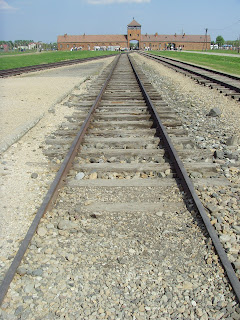 As
this blog might be read by someone who is planning to go to Poznan on Erasmus,
something I would like to highlight is to visit the concentration camp: Fort
VII. Whilst my boyfriend, Liam and two friends, Jonny and Stevie were visiting
they asked to visit the camp and I was in complete shock that there was one in
Poznan! Not one person had mentioned there was a concentration camp here and my
Erasmus friends seemed just as surprised. I would definitely recommend that
people visit the camp as it was one of the best ways to show visually (through
models, exhibitions and pictures) some key events during the Holocaust. However,
the camp is not set up for ‘promoting tourism’, it is for remembrance,
therefore does not have English descriptions to explain the exhibits (so it is
important to research the camp beforehand.)
As
this blog might be read by someone who is planning to go to Poznan on Erasmus,
something I would like to highlight is to visit the concentration camp: Fort
VII. Whilst my boyfriend, Liam and two friends, Jonny and Stevie were visiting
they asked to visit the camp and I was in complete shock that there was one in
Poznan! Not one person had mentioned there was a concentration camp here and my
Erasmus friends seemed just as surprised. I would definitely recommend that
people visit the camp as it was one of the best ways to show visually (through
models, exhibitions and pictures) some key events during the Holocaust. However,
the camp is not set up for ‘promoting tourism’, it is for remembrance,
therefore does not have English descriptions to explain the exhibits (so it is
important to research the camp beforehand.) 
 At Auschwitz I had been told that
during a Polish child’s education they must visit a concentration camp, as the
Holocaust had such a dramatic effect on Poland’s history.
At Auschwitz I had been told that
during a Polish child’s education they must visit a concentration camp, as the
Holocaust had such a dramatic effect on Poland’s history.
It is important for
people to remember the past as it can still have an impact on the future. I am
aware that by teaching about the Troubles in schools it can create other
problems e.g. religions having different perspectives, (bias towards one side),
as well as knowing what age is appropriate for the children to begin learning
about certain events. However, I personally feel I wasn’t educated enough on
Northern Ireland in school and felt I could have benefitted from this. The
Ulster Museum has now dedicated a whole section to the history of the Troubles,
which is a good example of how teachers can introduce the topic. It is strange
that my Erasmus friends were taught about the history of Northern Ireland in
school and I was not!










